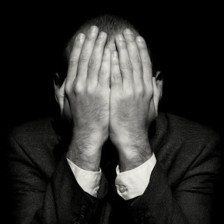Studies, illustrates that BDD can strike virtually anywhere. The skin, hair, and nose are most often disliked. It’s likely that people underreport worries about certain body areas—for example, breasts and genitals—because they’re embarrassed, and that the true percentages for such areas are higher than those listed here.
| Body Part | Percent (%) of Patients with Concern |
| Skin Hair Nose Weight Stomach Breast/chest/nipples Eyes Thighs Teeth Legs (overall) Body build/bone structure Ugly face (general) Face size/shape Lips Buttocks Chin Eyebrows Hips Ears Arms/wrist Waist Genitals Cheeks/cheekbones Calves Height Head size/shape Forehead Feet Hands Jaw Mouth Back Fingers Neck Shoulders Knees Toes Ankles Facial muscles |
73 56 37 22 22 21 20 20 20 18 16 14 12 12 12 11 11 11 9 9 9 8 8 8 7 6 6 6 6 6 6 6 5 5 3 3 3 2 1 |
* The percentages add up to more than 100% because people are usually concerned with more than one aspect of their appearance.
Skin Concerns:
Skin concerns are most frequent. Two-thirds of people with skin concerns obsess about perceived acne or scarring. This is followed by concerns with marks (in one-third) and skin color (in one-quarter), with people typically thinking their skin is too red or too white. But virtually any aspect of the skin can be disliked—facial pores that are considered unusually large, veins, capillaries, or other skin flaws. Others obsess about wrinkles, lines, sagging, shriveling, or stretch marks, which they may consider signs of aging.
Some people have multiple skin concerns. They become obsessed with supposed facial acne and scars, as well as veins, which were barely discernible to other people. They excessively check mirrors and repeatedly ask family for reassurance, asking “Do you think this pimple will go away? Will I have a scar?” To improve their skin, people will spend lots of time applying makeup and picking at their face, sometimes using pins. People will compulsively wash their hands.
Hair Concerns
Hair concerns are also very common. The most common worries focus on hair loss, thinning, or balding (a concern of one-third of people who dislike their hair) and excessive facial or body hair (also one-third). But hair obsessions may focus on virtually any aspect of the hair: it’s too curly, too straight, too full, not full enough, uneven, messy, or dirty.
While men are more likely to worry about thinning hair, women have this concern as well. Getting a haircut is usually very distressing for people with hair concerns. “I’m terrified of getting my hair cut,”. “Getting the right haircut is crucial. How I feel and function depends on how I happen to look and the quality of my haircut.” Hair concerns may also involve other body hair. Men may be preoccupied with supposedly uneven, light, or heavy beard growth. Men or women may think they have too much or too little body hair.
Nose Concerns
Nose concerns are also very common. About 60% of people with nose concerns worry that their nose is too large. More than a quarter worry that it’s bumpy or misshapen. People with nose concerns are especially likely to have surgery—often repeated surgeries.
Total Body Concerns
BDD can also involve larger body areas. Some people dislike virtually their entire body. About one-quarter of men with BDD are preoccupied with their overall body build, thinking they look too small or inadequately muscular. This form of BDD is called “muscle dysmorphia”. Others—often women—are concerned that they’re too large or overweight. In studies up to 22% of female BDD sufferers were excessively concerned with their weight.



